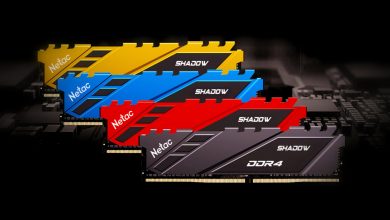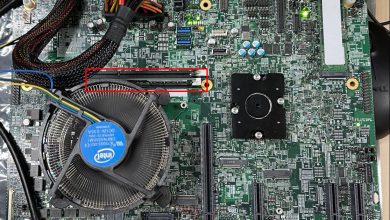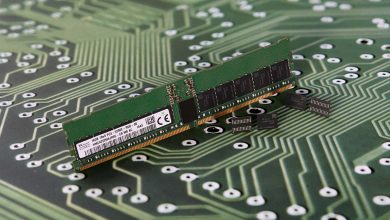
Smartphones are starting to sport rather insane amounts of memory, up to 16GB in some places, but there is still lack of high density RAM for PCs, servers, and HPCs. Memory in those computers number in three digits but are mostly limited by how much RAM chips can be fit in a module. If you can cram more RAM in a single stick, you can have more memory in the same amount of slots, and Samsung’s new 512GB DDR5 DRAM module definitely breaks the barriers not just in capacity or speed but in the technology used.
Samsung’s new module is not just its first based on the new DDR5 spec, it also claims the title of being the first with that high capacity to be made using a High-K Metal Gate or HKMG process. As DRAM components get smaller, so does the insulation layer that’s supposed to prevent electrical currents from leaking. The solution Samsung found was to replace the usual silicon-based insulator with new metals and materials which is exactly what HKMG does. The memory modules are targeted at AI/ML, exascale hyper-computing, analytics, networking, and other data-intensive workloads.
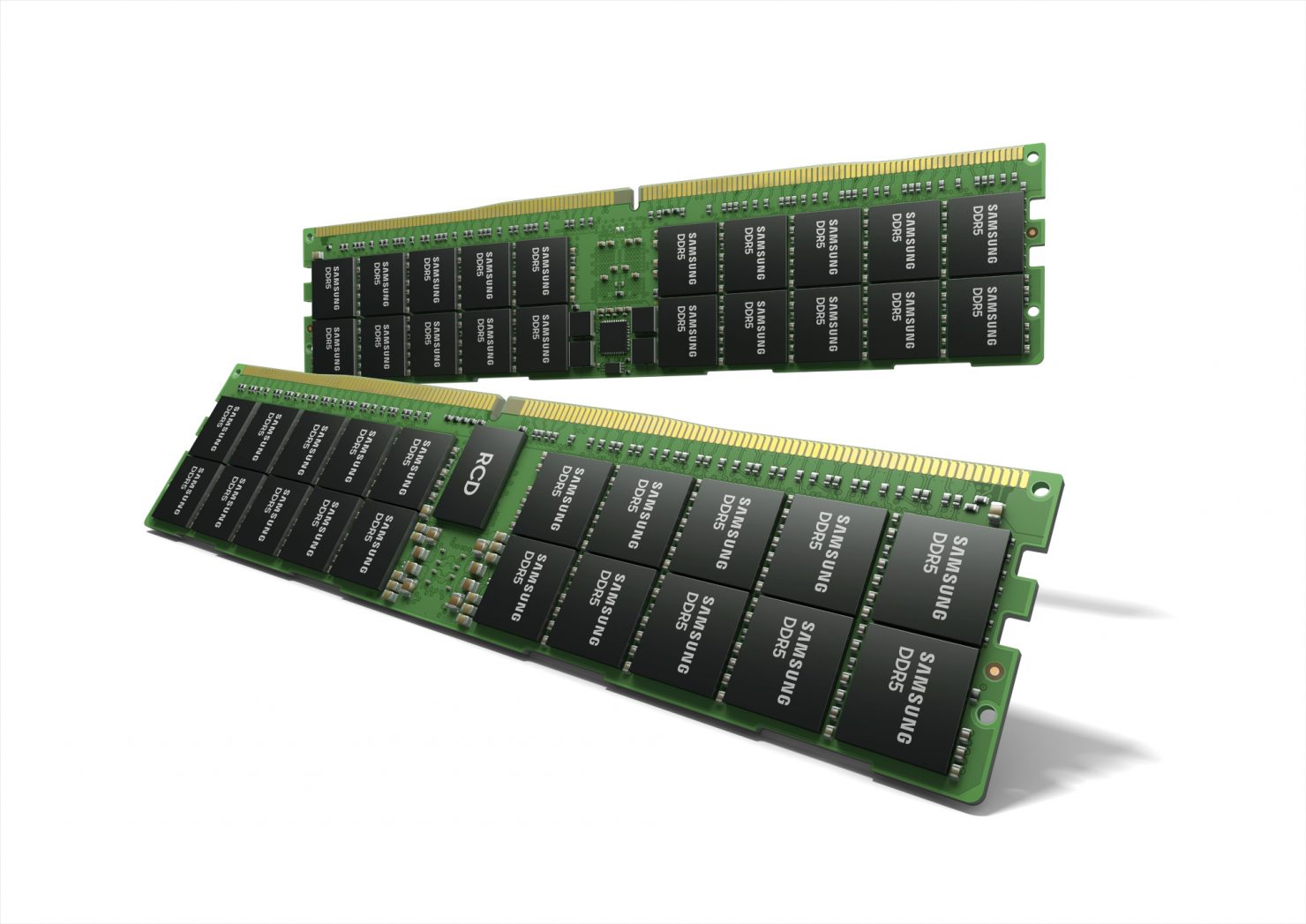
Samsung’s 512GB DDR5 registered DIMM (RDIMM) memory module uses 32 16GB stacks based on eight 16Gb DRAM devices. The 8-Hi stacks use through silicon via interconnects to ensure low power and quality signaling. For some reason, Samsung does not disclose the maximum data transfer rate its RDIMM supports, which is not something completely unexpected as the company cannot disclose specifications of next-generation server platforms.
An interesting thing about Samsung’s 512GB RDIMM is that it uses the company’s latest 16 Gb DDR5 memory devices which replace traditional insulators with a high-k material originally used for logic gates to lower leakage current. This is not the first time Samsung has used HKMG technology for memory as, back in 2018, it started using it for high-speed GDDR6 devices. Theoretically, usage of HKMG could help Samsung’s DDR5 devices to hit higher data transfer rates too.
Samsung says that because of DDR5’s reduced voltages, the HKMG insulating layer and other enhancements, its DDR5 devices consume 13% less power than predecessors, which will be particularly important for the 512GB RDIMM aimed at servers. Besides the 512GB module, Samsung is currently sampling different variations of its DDR5 memory product family to customers for verification and certification, the company added.
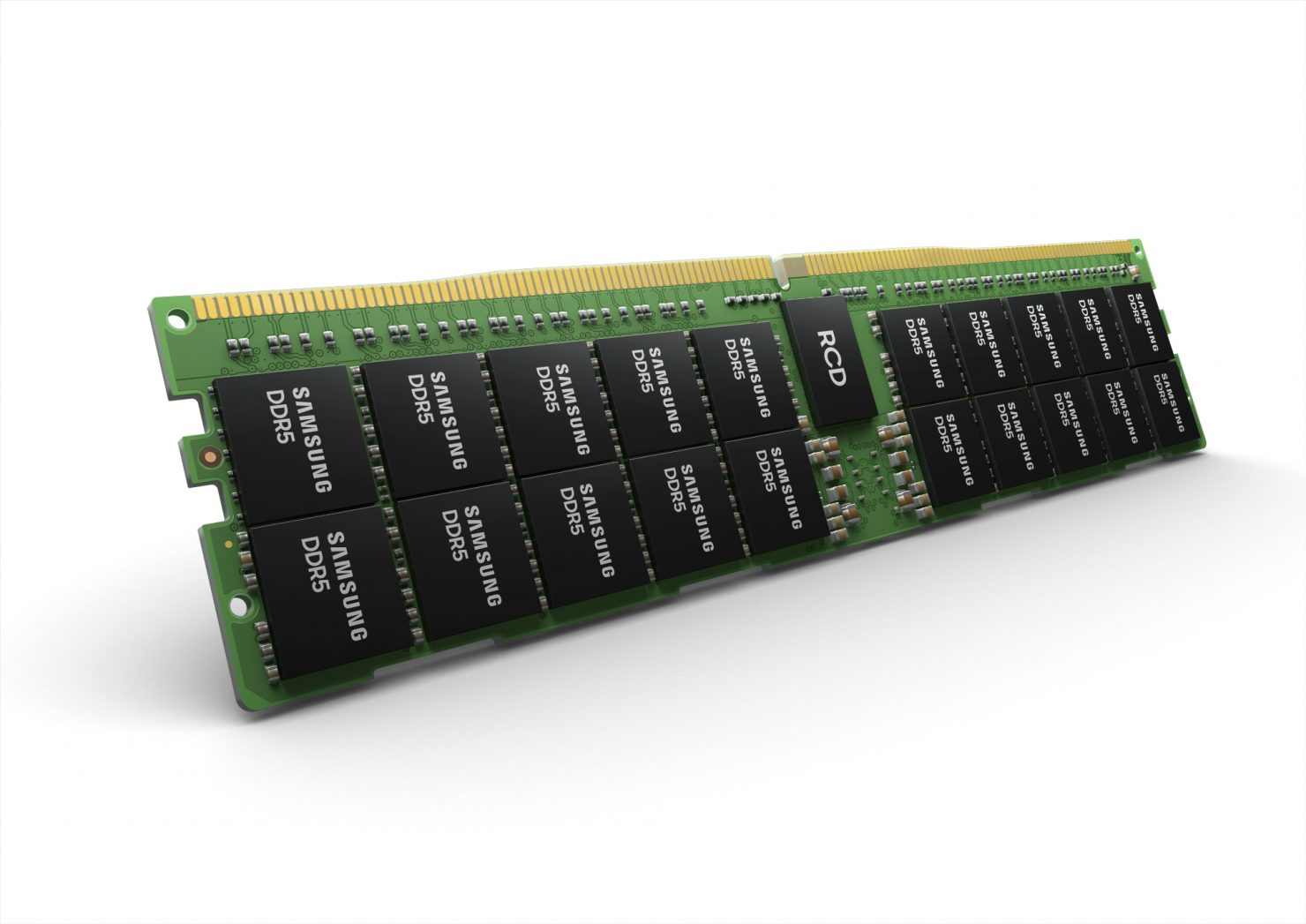
When used with server processors featuring eight memory channels and two DIMMs per channel, Samsung’s new 512GB memory modules allow you to equip each CPU with up to 8TB of DDR5 memory, up from 4TB today.
Samsung says it has already started sampling various DDR5 modules with various partners from the server community. The company expects its next-generation DIMMs to be validated and certified by the time servers using DDR5 memory hit the market.
“Intel’s engineering teams closely partner with memory leaders like Samsung to deliver fast, power-efficient DDR5 memory that is performance-optimized and compatible with our upcoming Intel Xeon Scalable processors, code-named Sapphire Rapids,” said Carolyn Duran, Vice President and GM of Memory and IO Technology at Intel.
“As the amount of data to be moved, stored and processed increases exponentially, the transition to DDR5 comes at a critical inflection point for cloud data centres, networks and edge deployments,” Carolyn stated
“Samsung is the only semiconductor company with logic and memory capabilities and the expertise to incorporate HKMG cutting-edge logic technology into memory product development,” Sohn Young-soo, vice president of DRAM memory planning at Samsung, said in a statement.
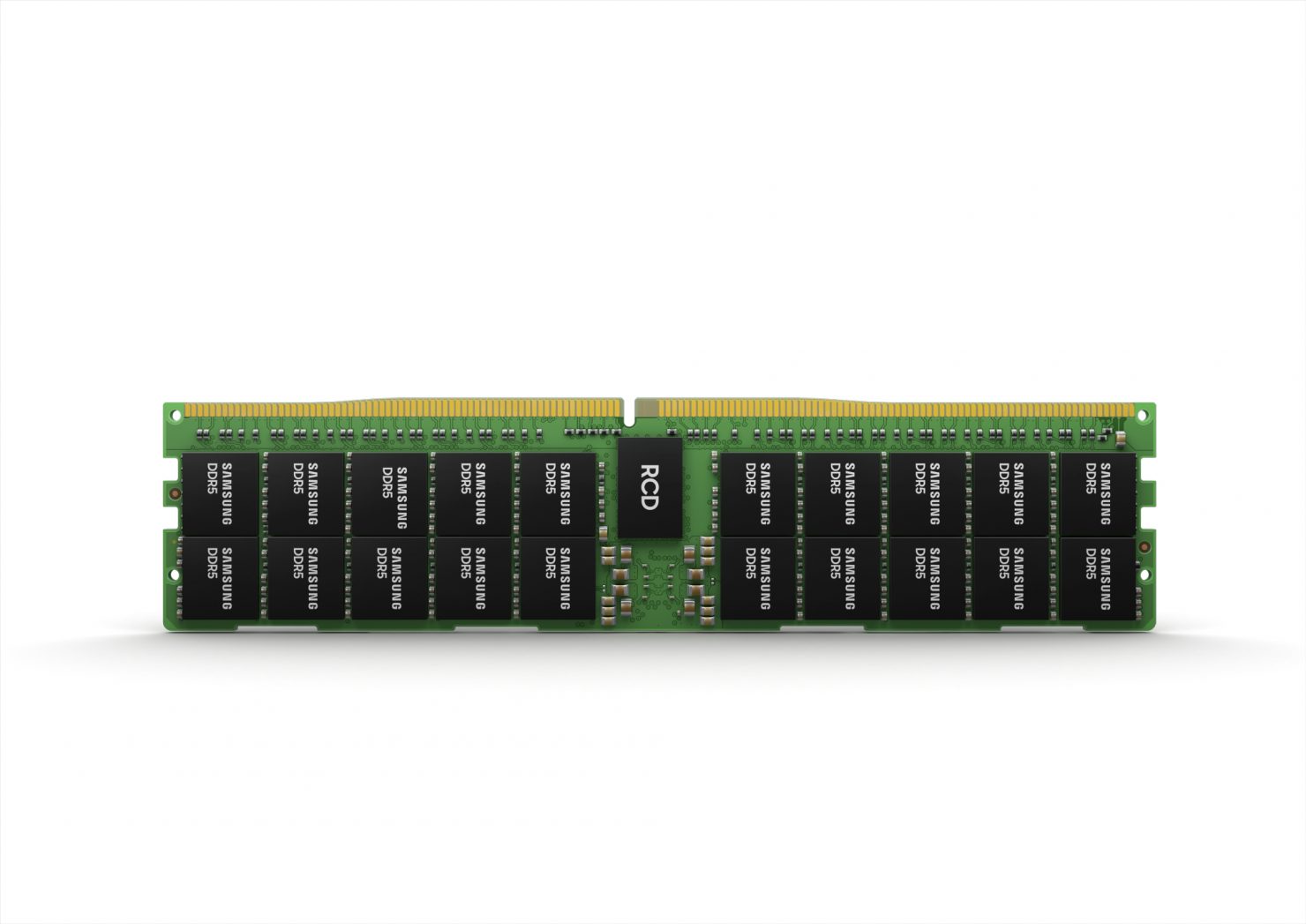
The switch to HKMG and lowering current leakage also have other benefits for the 512GB DDR5 memory. Samsung was able to reduce power consumption by 13% while also increasing performance to 7,200 MB/s, noted to be twice that of DDR4. These are the very same traits that are sought after in DRAM designed for energy-efficient data centers.
Samsung is no stranger to the HKMG process, having used it for its GDDR6 memory for graphics card back in 2018, another first in the industry. Along with Through-Silicon Via (TSV) technology that it already uses for many DRAM products, Samsung boasts that it is the only one in the market capable of pulling off such a feat.
The new DIMM is designed for next-generation servers that use DDR5 memory, including those powered by AMD’s Epyc ‘Genoa’ and Intel’s Xeon Scalable ‘Sapphire Rapids’ processors.
That said, Samsung’s HKMG-based 512GB DDR5 memory is still in the verification stage. Even after it passes that, however, don’t expect it to be available to consumers as the company is targeting customers in AI and machine learning, exascale computing, and data center industries instead.

